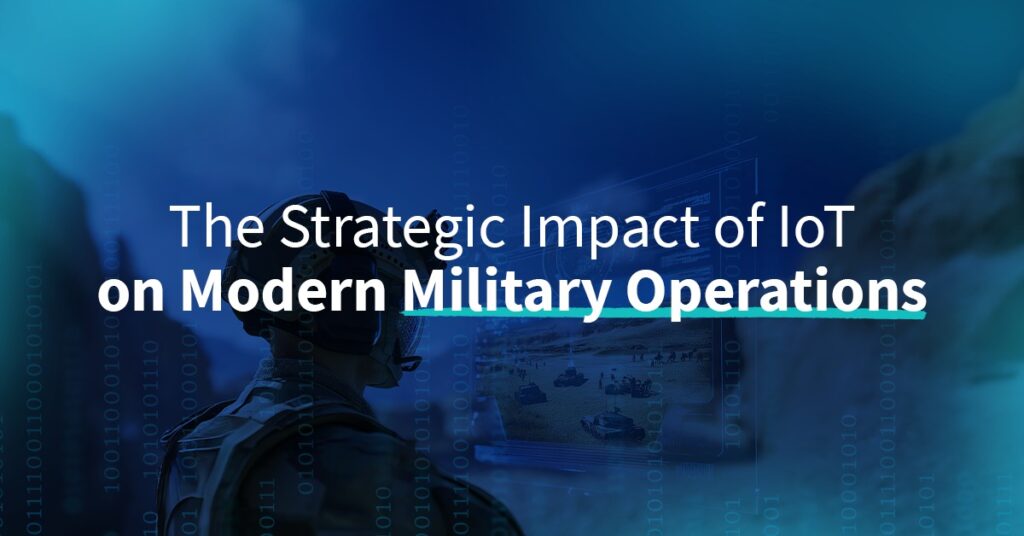Wired for War: The Transformative Role of IoT in Modern Defense Systems

The integration of the Internet of Things (IoT) within defense systems represents a transformative shift in contemporary military strategy and operations. According to a report by Market Research Future, the global IoT in defense market is projected to experience a compound annual growth rate (CAGR) of approximately 10.5% between 2022 and 2027. This growth reflects the increasing reliance on interconnected technologies to enhance operational effectiveness, situational awareness, and resource optimization within defense infrastructures.
Defining IoT in the Defense Context
IoT in the defense sector encompasses an expansive ecosystem of interconnected devices—including sensors, wearables, autonomous systems, and communication tools—engineered to collect, process, and transmit data in real time. These devices facilitate strategic decision-making by providing commanders with up-to-date intelligence, while simultaneously enhancing operational safety and reducing response time in mission-critical scenarios.
Key components of this ecosystem include:
- Smart Sensors and Monitoring Devices: Deployed across equipment, vehicles, and operational zones, these devices deliver environmental, logistical, and tactical data continuously to command centers.
- Wearable Technologies: Military personnel are increasingly equipped with wearable devices that monitor vital signs, location, and biometric performance, allowing medical teams and commanders to assess health conditions and coordinate efforts with improved precision.
- Unmanned Aerial and Ground Systems: Drones and robotic units integrated with IoT capabilities perform reconnaissance, surveillance, and logistics operations, thereby minimizing the need for direct human exposure to high-risk environments.
- Advanced Communication Frameworks: IoT facilitates secure and efficient data exchange between command structures and operational units, reinforcing coordination and adaptability.
- Weapon Systems with Embedded Intelligence: Smart weaponry utilizes real-time data to enhance targeting accuracy and operational responsiveness.
Strategic Functions and Applications
The incorporation of IoT into defense strategies serves several critical functions. Primarily, it facilitates continuous data acquisition, analysis, and transmission, which collectively bolster situational awareness and decision-making. Furthermore, it streamlines logistics through the automated tracking of supplies and maintenance needs, ensuring the timely availability of resources.
Prominent use cases include:
- Border Surveillance: IoT-enabled sensor networks and drones enhance perimeter monitoring and threat detection across sensitive or contested territories.
- Predictive Maintenance: Real-time equipment diagnostics prevent system failures by allowing for timely intervention and repair.
- Health Monitoring of Personnel: Wearables alert medical staff to anomalies in soldiers’ vital signs, promoting faster and more effective treatment responses.
- Autonomous Resupply and Support Missions: Drones and robotic units can deliver supplies or evacuate wounded personnel, reducing operational risks.
Advantages of IoT Adoption in Defense
The deployment of IoT technologies within military settings offers several key advantages:
- Enhanced Situational Awareness: Access to continuous, real-time data empowers commanders with a comprehensive understanding of dynamic battlefield conditions.
- Resource Efficiency: Automation of inventory, logistics, and maintenance contributes to cost savings and reduces human error.
- Cost-Effectiveness: Preventive maintenance and data-driven asset management extend the lifespan of critical military equipment.
- Increased Soldier Safety: Wearable monitoring systems and unmanned support technologies reduce personnel exposure to hazardous environments.
Challenges and Security Considerations
Despite its benefits, IoT integration within defense is not without challenges. The primary concern lies in cybersecurity. The interconnectivity of devices creates numerous vulnerabilities that can be exploited by adversaries for espionage, disruption, or sabotage. To mitigate these risks, defense organizations must implement encrypted communication protocols, multi-factor authentication, real-time intrusion detection systems, and routine security audits.
Additional challenges include:
- Lack of Standardization: Diverse IoT platforms and devices often lack interoperability, complicating their integration with existing military infrastructure.
- High Capital Investment: Establishing IoT infrastructure demands significant financial resources, particularly in hardware, software, cybersecurity, and personnel training.
- Future Outlook and Technological Advancements
Several emerging technologies are poised to significantly influence the trajectory of IoT deployment in defense:
- 5G Connectivity: High-speed, low-latency communication will facilitate seamless coordination among devices and systems in real time.
- Edge Computing: On-site data processing reduces latency and enhances operational reliability in combat environments.
- Artificial Intelligence (AI) and Machine Learning: These technologies will refine data analytics, automate threat detection, and support autonomous decision-making.
- Autonomous Systems: Future drones and robotic units will possess greater cognitive capabilities, allowing for increased autonomy in tactical missions.
It is anticipated that by 2030, approximately 75% of defense agencies globally will have integrated some form of IoT-based operational system.
Contributions of HashStudioz
HashStudioz, a leading IoT solutions provider, supports defense organizations in adopting and implementing these technologies. Their offerings include:
- Smart Surveillance Solutions for proactive threat detection.
- Real-Time Asset Tracking to enhance logistics and accountability.
- Predictive Maintenance Platforms to ensure equipment reliability.
- Secure Communication Systems to facilitate encrypted data transmission across networks.
Conclusion
IoT technologies are rapidly becoming indispensable within the defense sector. They offer transformative capabilities that not only enhance operational readiness and battlefield efficiency but also improve safety and reduce costs. While challenges such as cybersecurity, integration complexity, and financial investment remain significant, ongoing advancements in AI, edge computing, and 5G are expected to mitigate these issues. The defense landscape is thus steadily evolving towards a more connected, automated, and data-driven future.